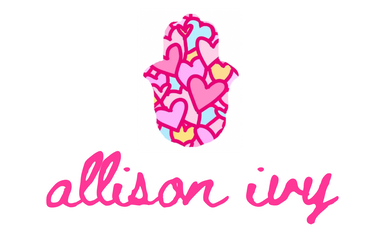Needlepoint Glossary
Whether you’re new to needlepoint or already have a lay of the land, you’ll notice we have a language of our own! Check out some of the most commonly used terms below:
Binding
Binding refers to either tape or sewn fabric around the edges of the canvas. The purpose of binding is to keep your thread from catching on the raw edges of the canvas as you stitch. It also helps keep the edges of the canvas from unraveling.
“I’m glad my canvas came bound, it keeps my thread from catching and it helps protect the canvas when I travel with it in my bag.
Canvas
This refers to the white, woven material, that the design is painted onto. It comes in “sizes”, the most popular being 18 “count” and 13 “count”.
The mesh count or size literally refers to the number of stitches per inch. The larger the number, the bigger the holes on the canvas – which will dictate the type of fiber you'll want to use. You will want to purchase thicker fibers for higher count canvases.
This isn’t a hard and fast rule, but smaller, ornament sized, canvases usually come in 18 count, and larger canvas designs come in 13 or 14.
“I chose this canvas because the design makes me giggle!”
“I prefer 13 count canvas because it’s easier for me to see!”

Fiber
Thread, string, yarn etc are all what we refer to as needlepoint fibers. It’s absolutely not necessary to use the word fiber, however, but it is very commonly used.
“I need to purchase fibers for my new canvas.”
Finishing
This refers to turning your fully stitched project into its final product (pillow, hanging sign, ornament, sunglasses case etc.)
“I am finishing this canvas into a pillow.”
Frogging
Frogging is a fun way to refer to removing stitches that are not to your liking. It can also be referred to as “ripping stitches”, meaning you are removing the stitches.
“I didn’t like the way I stitched that section, so I frogged it.”
“I ripped out that section and am starting over.”
LNS
This is an abbreviation for Local Needlepoint Shop, and means exactly what it says!
“I can’t wait to visit my LNS to pick out a new project for the summer.”
Needleminder
A needleminder is a decorative magnet that clips to your canvas and holds your needle in place when you are not using it. No more dropping needles and searching for them!
“I set my needle on my needleminder.”
Skein
Pronounced “skane,” it is a bundle of thread (or fibers). Usually the skein is loosely coiled so that once un-packaged, it can be easily uncoiled without getting knotted.
“I bought two skeins so that I have enough to stitch the whole background.”

Stash
A “stash” is a playful way to refer to the oodles of canvases or fibers that stitchers collect over time.
“I should finish the canvases in my stash before buying a new one!” (Something none of us have accomplished 😂)
“This canvas has so many colors - a great way to use up my stash!”
Stitch-Painted
The “stitch-painting” method is a precise way of painting a canvas, so that one single color is painted where a single stitch goes. This is different from “free-hand” painting, in that it takes the guessing out of which color should be stitched. There is absolutely nothing wrong about free-hand painting, by the way, it’s simply just another way of painting the canvas.
“I enjoy stitch-painted canvases because it’s easier for me to follow the exact stitches.”
Stretcher Bars
The edges of a needlepoint canvas are attached to stretcher bars to literally stretch the canvas perfectly flat and to keep it from warping while completing your project. Many LNS (Local Needlepoint Shops) will apply the bars for you, by request. You can also buy them online (along with special tacks) and add them on at home.
“I added stretcher bars so that my canvas stays flat.”





